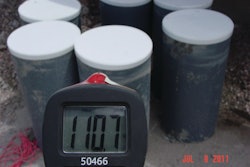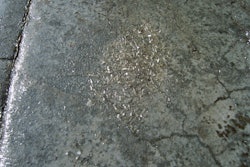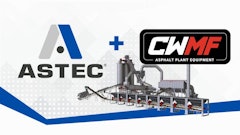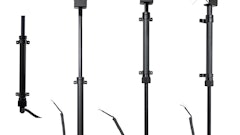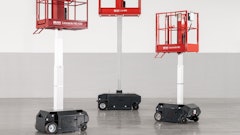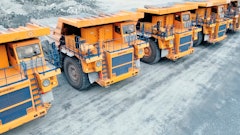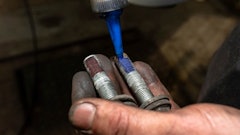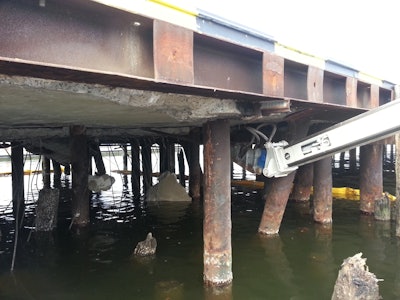
By Alex Schlosser
Information from this article was first published in Demolition Magazine and is being reused with permission from the National Demolition Association.
Across the Patapsco River from the historic Fort McHenry rests Baltimore’s only full-service heliport. It’s used by the local police and STAT MedEvac, as well as for transporting donated organs and other public uses — but there was a potential problem. The 250-foot-long Pier 7 Heliport was built over an old, fire-damaged pier. It was possible that debris trapped in the old structure could become airborne from the helicopters’ rotor wash during departures and arrivals. Rather than risking that hazard, the heliport hired Marine Technologies Inc. to demolish the old structure.
However, Marine Technologies couldn’t do it alone. The company contacted NDA member KT-Grant Inc. to supply it with one of the company’s long reaching, low profile, remote controlled, KT-30 machines. The machine was outfitted with both a hydraulic shear and hammer to remove the old timber and concrete structure under the new pier along with the dive team, barges, tugs and cranes from Marine Technologies.
But how do you demolish a pier without land access?
“All of the equipment had to be loaded at another pier on the south side of the Baltimore Inner Harbor then towed by tugboat to the pier on the north side of the Inner Harbor,” says Bill Sagin, Eastern regional manager of KT-Grant.
Once the equipment reached the pier, work could begin — but only during low tide. The machine and its operator couldn’t reach under the pier when the water was high. The KT-30 machine reached down below the water, cut off the timbers with the shear, and then lifted them from the water on to the barges where crews downsized them and loaded them into containers. Divers sawed off the timbers at the mud line. They were then lifted out by the KT-30.
The machine broke up the concrete, and the divers moved it away from the new pilings. The barges were then relocated and the process started again.
“Using the KT-30 machine not only made work much safer for the divers, it also drastically reduced the demolition time,” Sagin says. The project began on May 18, 2015, and lasted about three months.
The job was safely completed, and the customer and the City of Baltimore were pleased with the work. In the end, 400 tons of timber was disposed of, and the concrete was used to make an artificial reef for underwater habitation.





